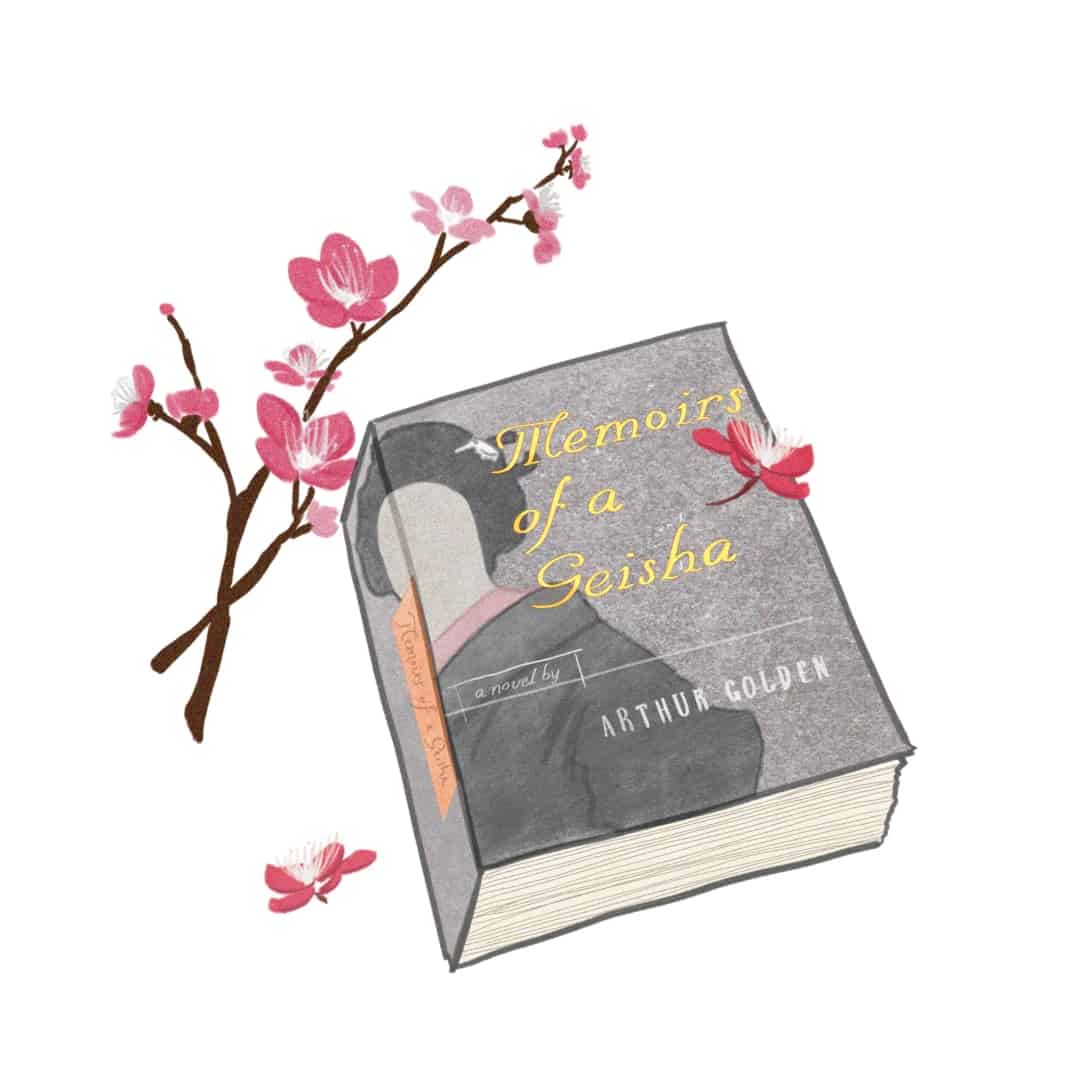The only novel I’ve ever wanted to read twice in my life, Memoirs of a Geisha is considered by many to be a historical fairy tale that paints a breathtakingly exotic and beautiful world. Written by an evocative author, it tells the story of a character whom we learn to both love and hate.
Taking place in Japan, the novel spans from the early 1900s, when nine-year-old Sayuri is taken away from her family at the age of nine, to the 1950s, when World War II has left the country in shambles. Sayuri is forced to become a geisha: a female Japanese entertainer specialized in the performance arts. Not to be confused with prostitution, the geisha business is dignified and requires years of rigorous and expensive training.
For background, in the 1920s, there were over 80,000 geishas in Japan. Many of them started training at a very young age in a kaburenjo, a school that teaches girls how to sing, dance, play instruments, and perform tea ceremonies. In addition to becoming a skillful artist, the girls must learn how to carry themselves with grace and allure.
A geisha will spend hours getting ready for work. From lavish kimonos to extensive hairdressing routines, a geisha’s main purpose is to please and entertain men, to gain their liking. This is also so that they can earn a danna: a wealthy man who will pay for and take care of them in exchange for a more intimate relationship. The world of geishas is where the gender dichotomy manifests to its fullest, where women are presented as nothing more than an object of desire.
Through her struggles, young Sayuri takes us into a geisha’s world — one where she’s trained to enchant the most powerful men, yet bear no power in choosing whom she can love. Sayuri lives a life like water flowing down a hill, until she splashes into something that forces her to find a new course. Although she leads a glamorous life in the public eye, Sayuri is helpless to her own fate.
Arthur Golden wrote the entire story in the gentle and innocent voice of Sayuri. To create a narrative as historical and as niche as Memoirs of a Geisha, Golden conducted a lot of firsthand research. Golden interviewed Mineko Iwasaki, who became the biggest inspiration for the creation of Sayuri. Iwasaki was a geisha herself — one of the most well-known in Kyoto in her time.
Iwasaki provided Golden with many rich details and insights about her life as a geisha. However, following the book’s publication and success, Iwasaki was enraged. She felt betrayed at the book’s open publicity of her most private matter — namely, her mizuage, which is a ceremony that auctions a girl’s virginity. In addition, there were details in the book that Iwasaki felt were not properly represented. They acted as nothing more than sprinkled glamour that Golden used to write a bestseller.
Whether the alleged mistakes were intended or accidental, it is undeniable that Golden cannot be a perfect writer of Japanese culture. Golden is a man born in America. He never grew up in an okiya or faced the desolation of losing his entire family to poverty. However, what he lacks in experience, he makes up for with imagination and craftsmanship.
If you’re looking for a precise historical account of geisha culture, this book will not be it. But if you’re looking to escape into a world both lyrical and sensual, a world that captivates and evocates, then this is your book.


